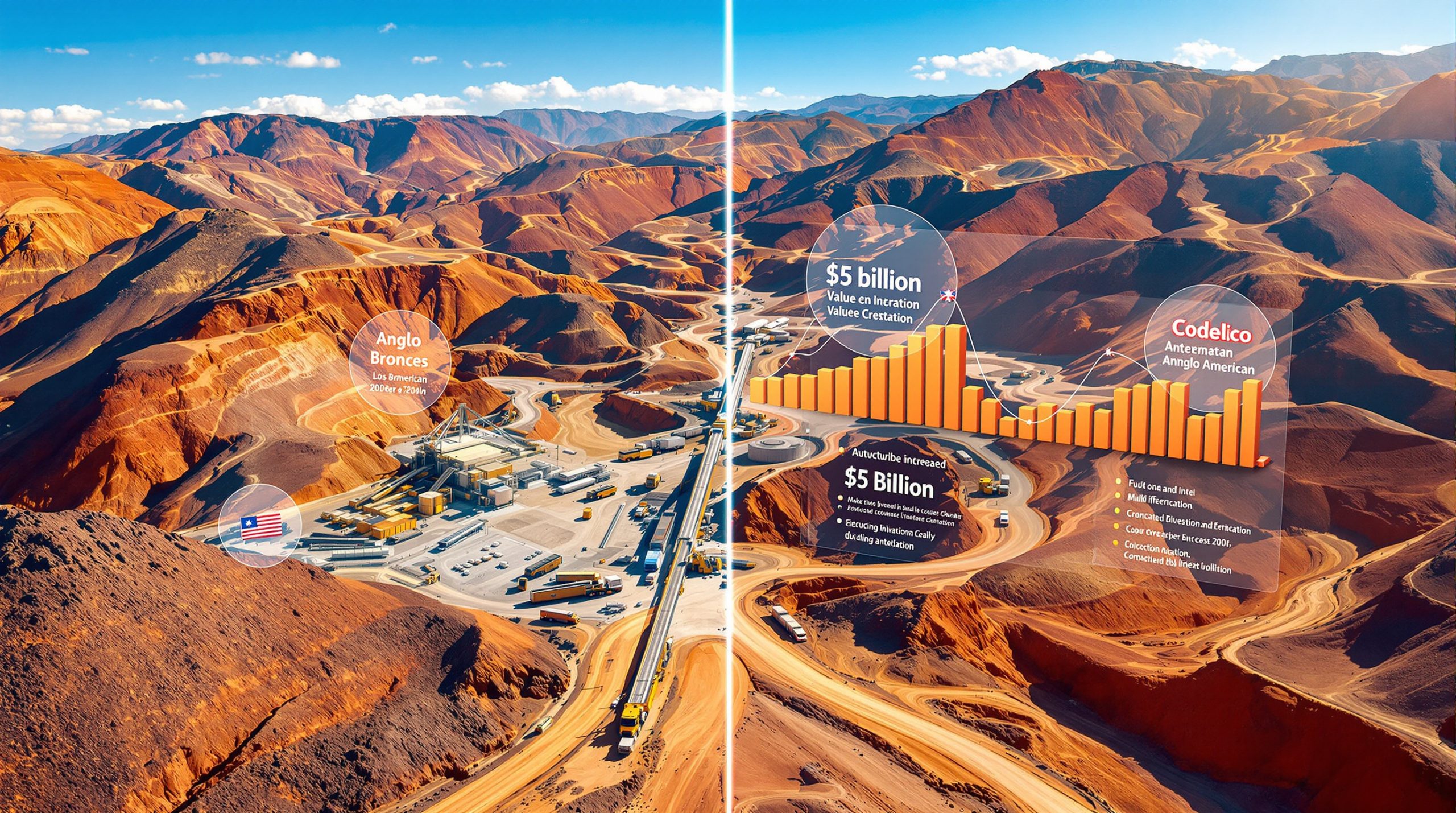What Are Critical Minerals and Why Are They Important?
The Strategic Value of Critical Minerals
The United States Geological Survey (USGS) identified approximately 50 minerals as "critical" in 2022 due to their essential role in national defense, energy security, and economic prosperity. These minerals, including lithium, cobalt, and rare earth elements, underpin technologies such as electric vehicle (EV) batteries, renewable energy systems, and advanced defense equipment. Unlike traditional commodities, critical minerals face unique market challenges, including opaque pricing mechanisms and supply chain vulnerabilities exacerbated by geopolitical rivalries.
Critical minerals represent the foundation of modern technological advancement, yet their supply remains precarious. Without these essential elements, the clean energy transition and national security objectives become unattainable, highlighting their outsized importance relative to their market visibility. The ongoing efforts toward addressing critical mineral shortages are crucial for maintaining technological momentum.
The Geopolitical Dimension
Over 70% of global critical minerals and battery supply chain components are concentrated in China, creating significant national security risks for Western nations. This concentration enables non-market actors to manipulate prices and control access, as seen in China's dominance of rare earth element processing. The U.S. and its allies are prioritizing efforts to establish diversified, resilient supply chains, but progress is hindered by decades-long timelines for mining projects and reliance on foreign midstream capabilities.
Western companies frequently find themselves competing against state-backed enterprises that operate with longer time horizons—often decades rather than quarters. This fundamental asymmetry creates significant competitive disadvantages, as Chinese firms can weather market downturns while maintaining strategic positions in critical mineral value chains. Recent critical mineral export restrictions have further complicated global supply dynamics.
How Government Policy Shapes Critical Mineral Markets
Recent Policy Developments
The Bipartisan Infrastructure Law (BIL) and Inflation Reduction Act (IRA) allocated over $6 billion in private capital and $10 billion in tax credits to domestic battery supply chain development. These policies mark a shift in the Department of Energy's (DOE) role from funding early-stage R&D to deploying commercial infrastructure. Additionally, a 2025 executive order initiated a Section 232 tariff investigation targeting critical minerals, aiming to create price floors without direct taxpayer subsidies.
The strategic application of targeted tariffs represents an innovative policy approach to mineral security. By establishing minimum price levels through trade mechanisms rather than direct subsidies, governments can stimulate domestic production while limiting fiscal exposure—a more sustainable model for long-term supply chain resilience. Various federal grants for critical minerals have also been instrumental in developing alternative supply sources.
Key Government Investment Metrics
The DOE's transition to infrastructure investment has catalyzed private-sector engagement, yet challenges persist in scaling midstream processing. For example, while the U.S. mines lithium domestically, over 90% of raw materials are exported to China for refining, highlighting the urgency of domestic capacity building.
This investment pivot reflects a maturing understanding of supply chain vulnerabilities—capital alone cannot overcome structural deficiencies in processing capacity, technical expertise, and market certainty. Successful government intervention requires addressing these interconnected challenges simultaneously.
What Are the Biggest Challenges in Critical Mineral Supply Chains?
Pricing Challenges
Non-exchange-traded critical minerals, such as antimony and gallium, suffer from opaque pricing dominated by Chinese spot markets. This opacity deters private investment, as projects struggle to secure financing without price stability. For instance, antimony prices fluctuated by 40% in 2023 due to geopolitical tensions, underscoring the risks of reliance on adversarial suppliers.
The absence of transparent price discovery mechanisms creates asymmetric risk profiles for Western investors. While Chinese state-backed enterprises can absorb price volatility through government support, Western companies must demonstrate clear returns on investment—a near-impossible task when future pricing remains unpredictable and vulnerable to manipulation.
Midstream Processing Bottlenecks
The U.S. lacks sufficient midstream infrastructure, with fewer than 10 domestic lithium refineries operational as of 2025. This deficit forces reliance on Chinese processing, exacerbating supply chain fragility. Building refineries requires not only capital but also specialized expertise, which remains concentrated in a handful of global firms.
Midstream processing represents the critical chokepoint in mineral supply chains. Even when raw materials originate in allied nations, they frequently must pass through Chinese refineries before reaching end-users, creating an persistent vulnerability that undermines supply chain diversification efforts at other stages.
How Can Industry and Government Collaborate More Effectively?
Effective Government Engagement Strategies
Industry leaders emphasize the need for precise, quantified requests to policymakers, such as streamlining permitting timelines or offering tax incentives for midstream projects. For example, Ashley Zumwalt-Forbes advocates for "obstacle removal" over additional funding, citing regulatory redundancies that delay mine development by up to 15 years.
Successful government engagement requires translating industry needs into actionable policy frameworks. When companies request specific timeline reductions or permitting pathway clarifications rather than generic "support," they enable policymakers to craft targeted interventions with measurable outcomes. Additionally, addressing mining industry ESG challenges creates a more sustainable foundation for sector growth.
Realistic Timeline Expectations
Developing new mines typically requires 20+ years, while midstream facilities demand 5–7 years. However, defense-focused solutions, such as modular rare earth processing units, could address urgent needs within 1–2 years, albeit at higher costs.
These extended timelines create fundamental misalignments between political cycles and mineral development realities. Policymakers seeking quick wins often underestimate the generational commitment required to rebuild secure supply chains, while industry stakeholders must navigate shifting policy priorities that can undermine long-term investments.
What Opportunities Exist for Women in the Critical Minerals Sector?
Leveraging Market Dysfunction
Market inefficiencies, such as fragmented supply chains and information asymmetry, create opportunities for innovation. Zumwalt-Forbes' startup, Black Mountain Metals, capitalized on these gaps by acquiring nickel assets in Australia ahead of market recognition, demonstrating how agility and foresight can yield competitive advantages.
Periods of market transformation create unique openings for new entrants who can identify emerging value propositions before they become obvious. Women entrepreneurs and leaders who recognize these inflection points can establish footholds in an industry traditionally dominated by established players and conventional thinking.
Case Study: Black Mountain Metals
Founded in 2017 by Zumwalt-Forbes at age 27, Black Mountain Metals identified undervalued nickel deposits in Australia, securing assets before larger firms entered the market. The company's success highlights the potential for early movers to shape emerging markets, particularly in critical minerals.
This entrepreneurial approach demonstrates how technical knowledge combined with market timing can overcome traditional barriers to entry. By recognizing nickel's strategic importance before the broader EV revolution gained momentum, Black Mountain Metals secured valuable assets at favorable valuations, creating substantial value through foresight rather than scale.
How Can Companies Balance Profit and Responsibility in Critical Minerals?
Environmental and Social Governance Considerations
Companies like Black Mountain Metals prioritize environmental stewardship despite regulatory uncertainties, recognizing that long-term viability hinges on community trust. For instance, adopting closed-loop water systems in mining operations reduces ecological impact while aligning with investor ESG criteria.
The critical minerals sector faces particular scrutiny given its foundational role in the clean energy transition—producing the materials necessary for decarbonization while managing its own environmental footprint. This paradox requires thoughtful engagement with communities and innovative approaches to minimize impacts across the full life cycle of operations.
Future Policy Uncertainty
While regulatory rollbacks are possible, industry leaders caution against abandoning ESG commitments. Firms maintaining high standards may gain market share as consumers and investors increasingly prioritize sustainability.
The regulatory landscape for critical minerals remains highly volatile, with potential shifts in administration or governance priorities creating significant planning challenges. Companies that build resilience through scenario planning and maintain consistent values regardless of regulatory requirements position themselves for long-term success amid policy fluctuations. The uranium export ban impact demonstrates how quickly policy changes can disrupt established supply chains.
FAQs About Critical Minerals and Battery Supply Chain
What makes a mineral "critical"?
A mineral is deemed critical if it is essential for national security or economic stability and faces supply chain risks, such as geopolitical concentration. The designation considers both a mineral's importance to key technologies and industries as well as vulnerabilities in its supply chain that could disrupt availability.
How long does it take to develop a new critical mineral supply chain?
Full supply chain development requires at least a decade, with mines taking 20+ years and processing facilities 5–7 years. This extended timeline reflects the complex technical, regulatory, and financial challenges involved in establishing secure mineral supply chains from exploration through processing.
What are the two biggest challenges in critical mineral markets?
Pricing opacity and midstream bottlenecks are the primary obstacles, driven by Chinese market dominance and inadequate domestic refining capacity. These interrelated challenges create reinforcing cycles of market dysfunction that deter investment and perpetuate dependency on concentrated supply chains.
How is the US government supporting critical mineral development?
The U.S. has deployed $6 billion in private capital and $10 billion in tax credits, alongside tariff investigations to incentivize domestic production. These initiatives reflect a whole-of-government approach to addressing critical mineral vulnerabilities through both direct investment and market-shaping policies.
This comprehensive strategy acknowledges that rebuilding secure critical minerals and battery supply chain requires synchronized efforts across numerous agencies and policy domains—from defense procurement to tax incentives to trade measures—creating a multifaceted approach to a complex challenge.
Ready to Capitalise on the Next Critical Mineral Opportunity?
Discover how to stay ahead of critical mineral investment trends with real-time alerts on significant ASX mineral discoveries through Discovery Alert's proprietary Discovery IQ model, providing actionable insights before the broader market. Visit our discoveries page to understand how major mineral discoveries have historically delivered substantial returns for early investors.




